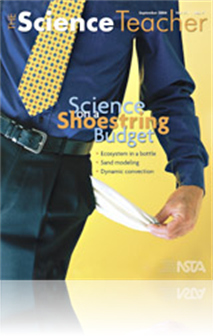All Resources
Journal Article
Earth science teaches know how frustrating it can be to spend hundreds of dollars on three-dimensional (3-D) models of Earth’s geologic features, only to use the models for a few class periods. To avoid emptying an already limited science budget, t...
Journal Article
After the Bell: Creating junior ethologists
Did you ever think that observing your dog, cat, fish, bird, or reptile could prepare you for long-term science investigations? Indeed it can! The basis for developing scientific thinking is improving observation skills. Through observation, students...
Journal Article
Ask the Experts—September 2004
The experts address the following question in this month’s column: Why do geckos make sounds and why mostly at night?...
Journal Article
Astrobiology is a relatively new field of study in science, one that has found a home in the curriculum of many universities. At the middle level, this multidisciplinary field is an exciting mix of topics and questions that can help students see how ...
Journal Article
Just for once, skip the usual first day of school routine that includes seating charts, questionnaires, textbook distribution, and so on, and try a little science instead. By implementing this inquiry-based lesson into your science curriculum, studen...
Journal Article
Typically, teachers use simple models that employ differences in temperature and density to help students visualize convection. However, most of these models are incomplete or merely hint at (instead of model) convective circulation. In order to make...




